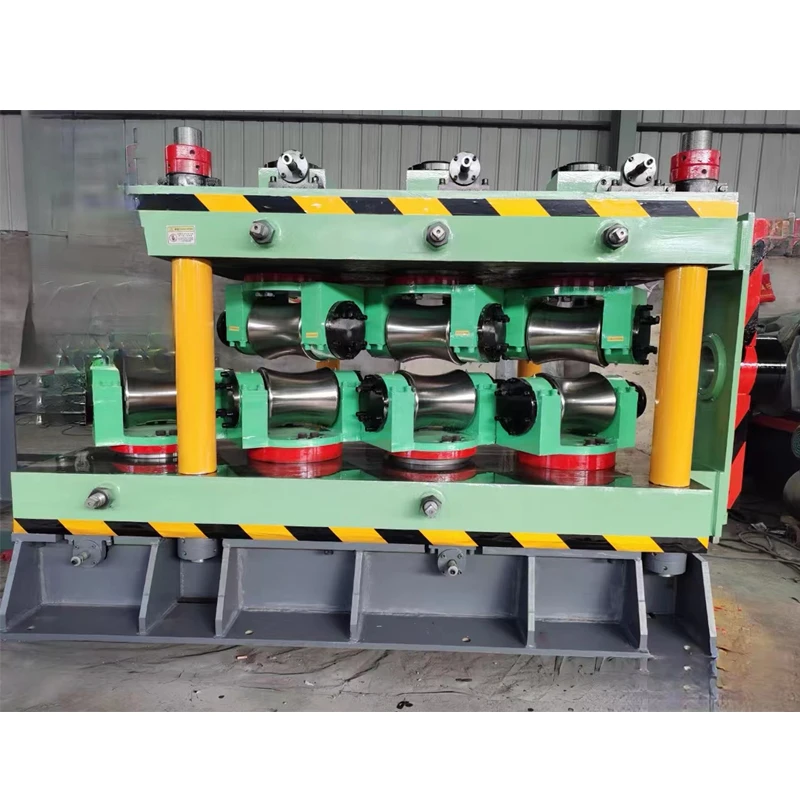steel forming machine
Understanding Steel Forming Machines A Comprehensive Overview
Steel forming machines are integral to various industries, particularly in the manufacturing and construction sectors. These machines are primarily designed to reshape steel into various forms and components, making them indispensable for producing everything from structural beams to intricate parts for machinery. As technology evolves, so does the sophistication of steel forming machines, which significantly enhances efficiency and precision in metal fabrication processes.
At their core, steel forming machines operate based on the principle of applying force to a piece of steel to alter its shape without compromising its structural integrity. The key types of steel forming processes include bending, rolling, forging, and stamping, each serving specific applications in industrial production.
Types of Steel Forming Processes
1. Bending This process involves applying force to steel to create a bend or curve. Bending machines, such as press brakes, exert pressure on the steel sheet to achieve the desired angle. This technique is widely used in creating various parts for vehicles, tools, and structural components.
2. Rolling In rolling, steel is passed through a series of rollers that progressively reduce its thickness and change its shape. Hot and cold rolling processes are employed depending on the temperature of the steel. Hot rolling occurs at high temperatures, allowing for easier deformation, while cold rolling is performed at room temperature for enhanced surface finish and tighter tolerances.
3. Forging This highly robust process involves shaping steel using localized compressive forces. Forging enhances the steel's strength and toughness due to the refined grain structure it produces. Various types of forging, including open-die and closed-die forging, are used to create components for aerospace, automotive, and heavy machinery applications.
4. Stamping Stamping is a mass-production process that uses dies to cut and shape the steel into predetermined forms. It is a cost-effective method for producing high volumes of identical parts, such as brackets, panels, and frames.
steel forming machine

Advancements in Steel Forming Technology
The evolution of steel forming machines has been greatly influenced by advancements in technology. Modern machines are often equipped with computer numerical control (CNC) systems, which provide exceptional precision and repeatability. CNC technology allows for intricate designs to be programmed into the machine, resulting in consistent production of complex geometric shapes that were once challenging to achieve.
Moreover, automation has transformed the steel forming industry. Automated systems not only streamline production processes but also reduce labor costs and the risk of human error. Robotics are increasingly being integrated into steel forming operations, handling tasks like loading, unloading, and quality inspection, thereby enhancing efficiency and safety on the shop floor.
Applications of Steel Forming Machines
Steel forming machines have a wide range of applications across multiple industries. In construction, they are used to produce beams, columns, and reinforcement bars essential for building infrastructure. The automotive industry relies heavily on steel forming for creating chassis components, body panels, and engine parts. Additionally, the energy sector utilizes custom-formed steel components for machinery in power plants and renewable energy installations.
Conclusion
In summary, steel forming machines play a crucial role in the manufacturing landscape, enabling the efficient production of various steel components essential for numerous industries. As technology continues to advance, the capabilities of these machines expand, resulting in improved quality, speed, and cost-effectiveness in manufacturing processes. The future of steel forming looks promising, with innovations like additive manufacturing and advanced materials paving the way for even more versatile applications and products. As businesses seek to enhance their operational efficiencies, investing in state-of-the-art steel forming machines is a strategic move that can lead to significant competitive advantages.
-
High Frequency Straight Seam Welded Pipe Production Line-BzZhou Xinghua Machinery Equipment Manufacturing Co., LTD.|line pipe steel&welded gas pipeNewsJul.30,2025
-
High Frequency Straight Seam Welded Pipe Production Line-BzZhou Xinghua Machinery Equipment Manufacturing Co., LTD.|High Precision&Automated SolutionsNewsJul.30,2025
-
High Frequency Straight Seam Welded Pipe Production Line - BzZhou Xinghua Machinery Equipment Manufacturing Co., Ltd.NewsJul.30,2025
-
High Frequency Straight Seam Welded Pipe Production Line-BzZhou Xinghua Machinery Equipment Manufacturing Co., LTD.|Precision Welding, High EfficiencyNewsJul.30,2025
-
High Frequency Straight Seam Welded Pipe Production Line|BzZhou Xinghua|Precision Welding&EfficiencyNewsJul.30,2025
-
High Frequency Straight Seam Welded Pipe Production Line - BzZhou Xinghua|Precision Engineering&EfficiencyNewsJul.30,2025


